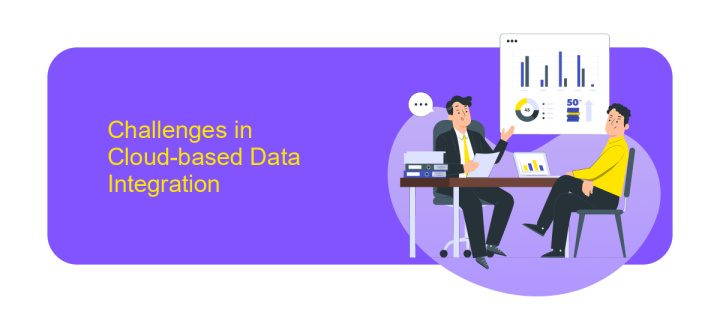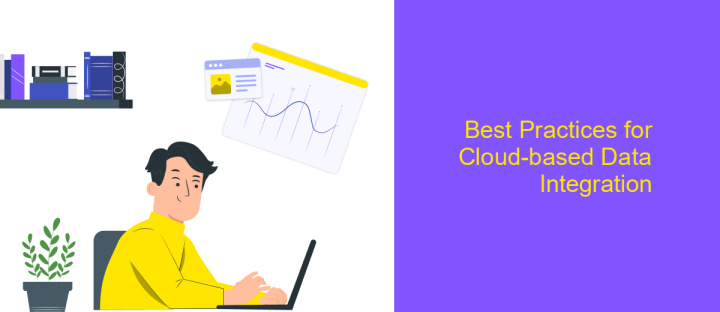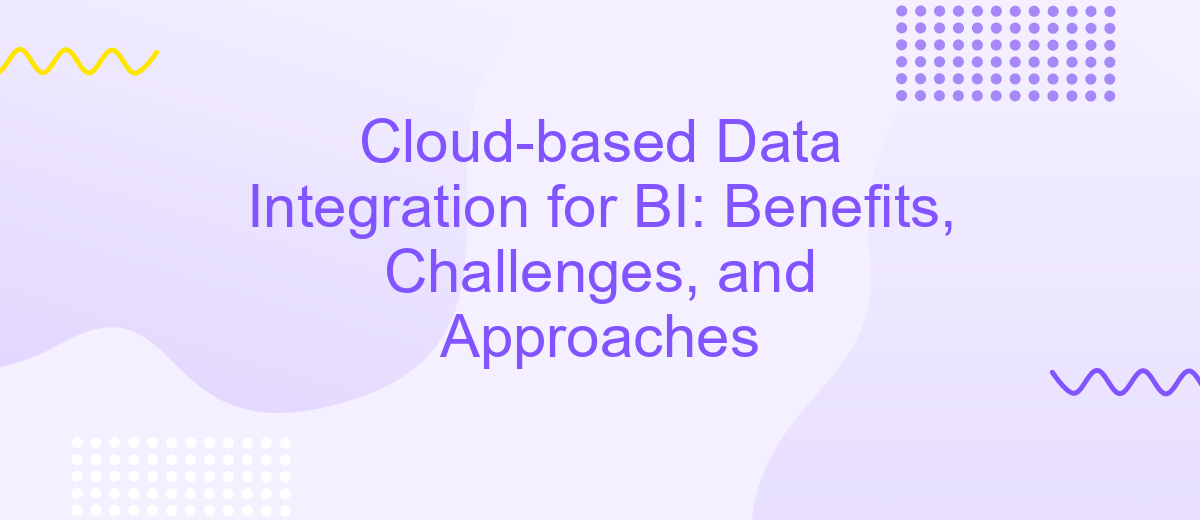Cloud-based Data Integration for BI: Benefits, Challenges, and Approaches
In today's data-driven world, cloud-based data integration has become a cornerstone for Business Intelligence (BI) strategies. This article explores the benefits, challenges, and approaches of leveraging cloud technology to seamlessly integrate data from diverse sources. By understanding these facets, organizations can enhance their decision-making processes, achieve greater scalability, and maintain competitive advantage in an ever-evolving market landscape.
Benefits of Cloud-based Data Integration
Cloud-based data integration offers numerous advantages for businesses looking to enhance their Business Intelligence (BI) capabilities. By leveraging cloud technologies, organizations can seamlessly integrate data from various sources, leading to more accurate and timely insights.
- Scalability: Cloud solutions allow businesses to scale their data integration processes effortlessly, accommodating growing data volumes without significant infrastructure changes.
- Cost Efficiency: Utilizing cloud-based services reduces the need for expensive on-premises hardware and maintenance, translating into lower operational costs.
- Accessibility: Cloud platforms enable real-time access to integrated data from anywhere, facilitating better decision-making and collaboration across teams.
- Security: Advanced security features in cloud services ensure that sensitive data is protected, complying with industry standards and regulations.
- Flexibility: Cloud-based integration supports a wide range of data types and sources, providing the flexibility to adapt to evolving business needs.
In conclusion, adopting cloud-based data integration for BI not only enhances operational efficiency but also empowers organizations to make data-driven decisions with greater agility and confidence. The benefits of scalability, cost efficiency, accessibility, security, and flexibility make it an attractive option for modern enterprises.
Challenges in Cloud-based Data Integration

One of the primary challenges in cloud-based data integration is ensuring data security and compliance. As businesses migrate their data to the cloud, they must navigate a complex landscape of regulations and standards, such as GDPR and HIPAA. Ensuring that data is encrypted both in transit and at rest, as well as implementing robust access controls, is critical. Additionally, companies must be vigilant about potential vulnerabilities and continuously monitor for any security breaches to protect sensitive information.
Another significant challenge is dealing with data consistency and latency issues. Integrating data from multiple sources in real-time can lead to discrepancies and delays, which can impact the accuracy of business intelligence (BI) insights. Tools like ApiX-Drive can help streamline this process by automating data synchronization between various applications and platforms, reducing the risk of errors and improving data consistency. However, businesses must still invest in robust data governance practices to ensure that all integrated data is accurate, timely, and relevant for decision-making.
Approaches to Cloud-based Data Integration

Cloud-based data integration is essential for modern Business Intelligence (BI) systems, offering seamless data flow between various sources and destinations. Several approaches can be employed to achieve effective data integration in the cloud, each with its own set of advantages and challenges.
- ETL (Extract, Transform, Load): This traditional method involves extracting data from source systems, transforming it into a suitable format, and loading it into a data warehouse or BI system. ETL is highly customizable but can be time-consuming and resource-intensive.
- ELT (Extract, Load, Transform): In this approach, data is first extracted and loaded into the target system before transformation occurs. ELT leverages the processing power of cloud platforms, making it faster and more scalable than ETL.
- Data Virtualization: This method allows real-time data integration without physical data movement. By creating a virtual data layer, users can access and query data from multiple sources as if it were in a single repository.
- API-based Integration: Leveraging APIs, this approach facilitates seamless data exchange between cloud services and on-premises systems. It is highly flexible and supports real-time data synchronization.
Choosing the right approach depends on the specific needs and constraints of your organization. Factors such as data volume, complexity, and the required speed of integration play crucial roles in determining the most suitable method for cloud-based data integration.
Best Practices for Cloud-based Data Integration

Effective cloud-based data integration is crucial for leveraging the full potential of Business Intelligence (BI). It ensures that data from various sources is seamlessly combined and ready for analysis. To achieve this, organizations must follow best practices that enhance efficiency, security, and reliability of their data integration processes.
Firstly, it is important to choose the right integration tools that align with your specific needs. These tools should support a wide range of data sources and formats, and offer robust features for data transformation and cleansing. Additionally, ensuring data security and compliance with regulations is paramount, as cloud environments can be vulnerable to breaches.
- Automate data workflows to reduce manual intervention and errors.
- Implement data governance policies to maintain data quality and consistency.
- Use scalable solutions to handle growing data volumes and complexity.
- Regularly monitor and audit data integration processes for continuous improvement.
By adhering to these best practices, organizations can optimize their cloud-based data integration efforts. This not only improves the accuracy and reliability of BI insights but also enhances decision-making capabilities, ultimately driving business growth and innovation.


Case Studies and Examples
One notable case study involves a retail company that successfully implemented cloud-based data integration for their business intelligence (BI) needs. By leveraging cloud platforms, they managed to integrate data from various sources such as sales, inventory, and customer feedback. This integration enabled real-time analytics, providing the company with actionable insights that led to a 20% increase in sales and a significant reduction in operational costs. The use of cloud-based tools streamlined their data processes, making it easier to scale and adapt to market changes.
Another example is a healthcare provider that utilized ApiX-Drive to automate data integration between their electronic health records (EHR) system and BI tools. This seamless integration allowed them to analyze patient data more efficiently, improving patient care and operational efficiency. By automating data workflows, the healthcare provider reduced manual data entry errors and freed up valuable time for their staff. The insights gained from the integrated data helped them identify trends and make data-driven decisions, ultimately enhancing the quality of care they provided.
FAQ
What are the benefits of cloud-based data integration for BI?
What challenges might organizations face when implementing cloud-based data integration?
What approaches can be taken to ensure data security in cloud-based integrations?
How can ApiX-Drive help in automating and setting up cloud-based data integrations?
What are the key considerations when selecting a cloud-based data integration tool?
Do you want to achieve your goals in business, career and life faster and better? Do it with ApiX-Drive – a tool that will remove a significant part of the routine from workflows and free up additional time to achieve your goals. Test the capabilities of Apix-Drive for free – see for yourself the effectiveness of the tool.

